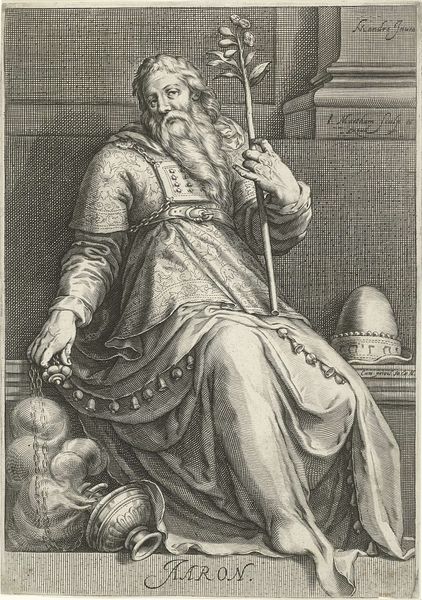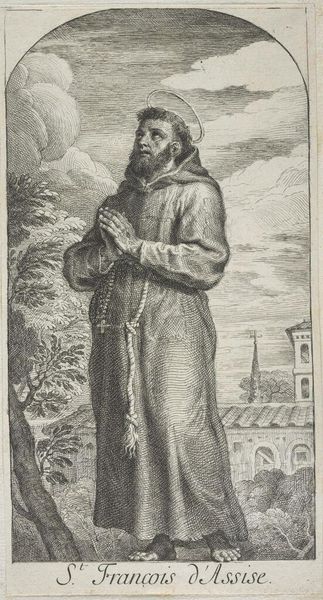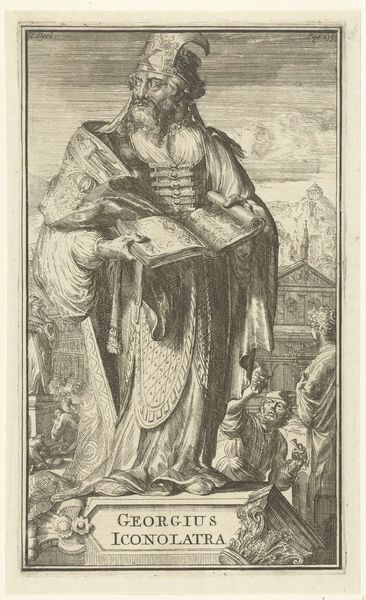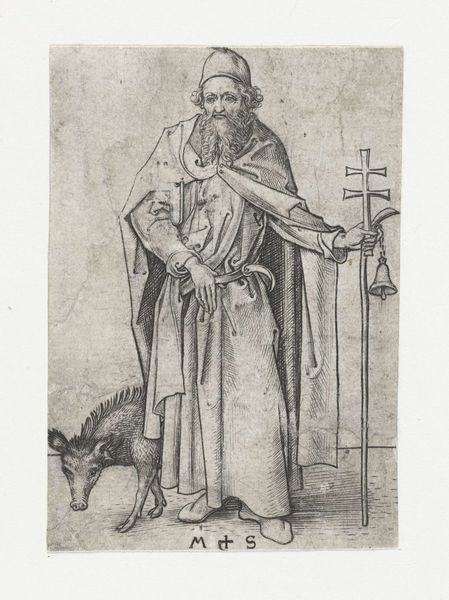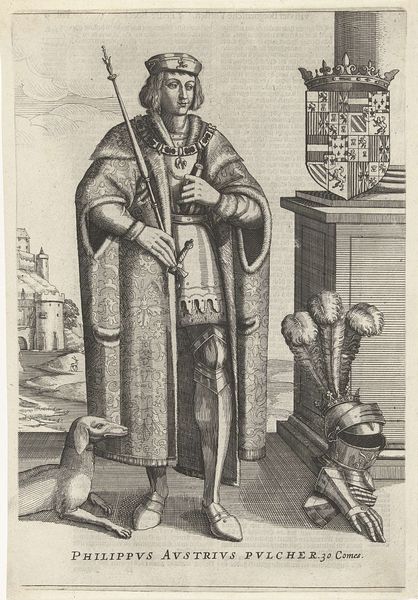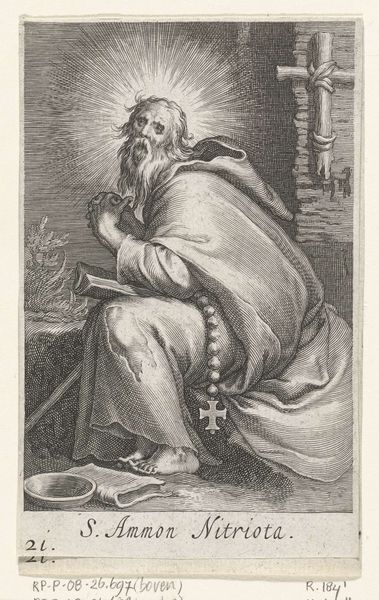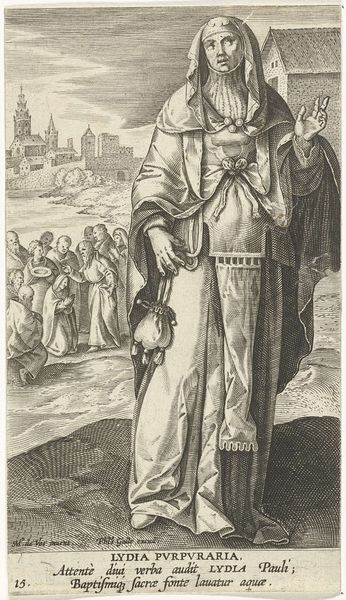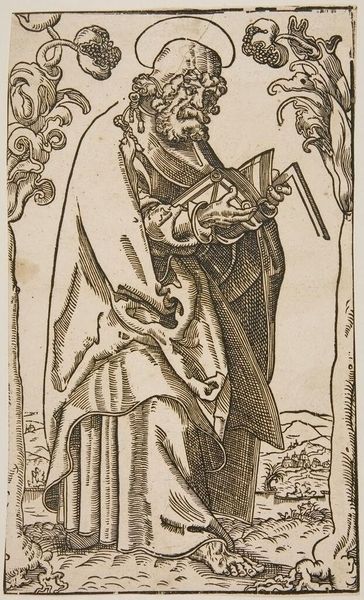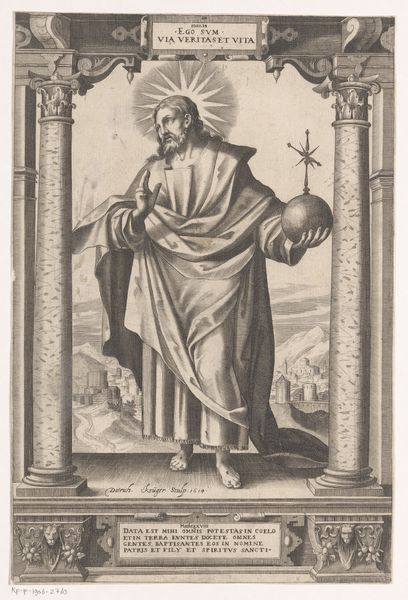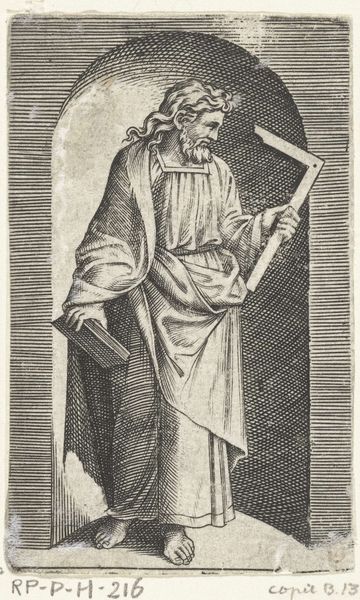
painting, oil-paint
#
portrait
#
narrative-art
#
painting
#
oil-paint
#
landscape
#
figuration
#
oil painting
#
history-painting
#
italian-renaissance
Dimensions: height 99 cm, width 44.5 cm, height 101.6 cm, width 48.3 cm, thickness 2 cm
Copyright: Rijks Museum: Open Domain
Curator: Immediately, I'm struck by the painting’s rather melancholic, almost resigned mood. It’s in muted tones with these two figures standing silently in the foreground, as if contemplating a world beyond themselves. Editor: We’re looking at a painting known as "Two Men in a Landscape," an oil painting dating back to around 1500, attributed to an anonymous artist. It places two men prominently within a sprawling vista. Curator: The way they are positioned seems very deliberate, perhaps even confrontational. The man pointing, draped in what looks like a simple tunic. Is he making some kind of pronouncement or warning, or giving instructions? Editor: In that era, figuration within landscapes held symbolic weight. The figures aren’t merely placed in the landscape; they have an active role, possibly indicating some form of spiritual or historical significance. Considering how the church and powerful families dictated imagery at this time, how do you think that would influence something like this painting? Curator: Power structures are crucial to remember. Are these figures challenging the viewer's own place in that landscape of power? Their directness hints at resistance. Editor: Precisely! Notice also the deliberate use of atmospheric perspective in creating depth. A tower sits to the left, the lake stretching out between the foreground and distant rocky hills and figures. What is striking about that backdrop is how removed it all is from what feels like this direct challenge to the audience! The use of landscape creates narrative. Curator: I am especially interested in the landscape elements themselves—they're not just pretty scenery. Are these perhaps representing spaces where men and women of the time found ways to subvert expectations? Were there political implications for them simply being represented in those landscapes? Editor: Absolutely, this brings it back to the crucial point of accessibility. Art provides clues to historical ideas but isn't always representative or accessible to the audiences of the time. Even the figures’ positioning challenges contemporary norms. Curator: It makes me wonder how differently it would have been interpreted if we transposed it to another cultural and political landscape entirely. The men could, for example, also have been read as symbols of strength against the world as a whole. Editor: Which underscores how essential social context is to its creation and consumption even now! Thanks to images like this we can better assess society at a certain point in time.
Comments
No comments
Be the first to comment and join the conversation on the ultimate creative platform.

